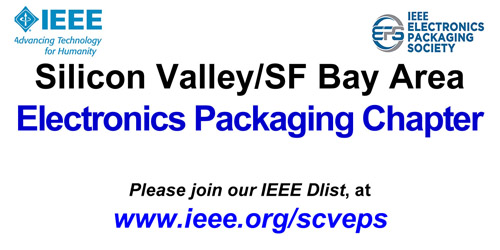Chiplet Design and Heterogeneous Integration Packaging
-- SoC, AMD, Intel, TSMC, IBM, interposer, substrates, attach, assembly, trends ...

Performance requirements for today’s semiconductor and optoelectronic devices are leading to shrinking geometries, more complex 3-dimensional structures, and new materials. High temperatures, hot spots and temperature spikes can have a major impact on reliability. It is essential that one have a thorough understanding of static and dynamic thermal performance under operating and static conditions. This has traditionally been complex, time consuming, and often lacked the resolution required to detect thermal anomalies that could lead to early device failures. Fortunately, advances in thermal imaging techniques that combine the benefits of thermoreflectance-based analysis with illumination wavelengths from near-ultraviolet to near infrared coupled with infrared thermography can support thermal, spatial, and transient resolution consistent with today’s advanced complex device structures and shrinking geometries. In addition, equipment has advanced to considerably reduce the time and cost to get accurate results. Many examples will be shared to fully illustrate the device thermal behaviors that can be detected with these advanced thermal analysis techniques.
Date and Time
Location
Hosts
Registration
-
 Add Event to Calendar
Add Event to Calendar
Loading virtual attendance info...
- SEMI World Hdqtrs
- 673 S Milpitas Blvd
- Milpitas, California
- United States 950335
- Starts 22 February 2023 08:05 PM UTC
- Ends 09 March 2023 10:05 PM UTC
- Admission fee ?
Speakers
 John H Lau
John H Lau
Chiplet Design and Heterogeneous Integration Packaging
Performance requirements for today’s semiconductor and optoelectronic devices are leading to shrinking geometries, more complex 3-dimensional structures, and new materials. High temperatures, hot spots and temperature spikes can have a major impact on reliability. It is essential that one have a thorough understanding of static and dynamic thermal performance under operating and static conditions. This has traditionally been complex, time consuming, and often lacked the resolution required to detect thermal anomalies that could lead to early device failures. Fortunately, advances in thermal imaging techniques that combine the benefits of thermoreflectance-based analysis with illumination wavelengths from near-ultraviolet to near infrared coupled with infrared thermography can support thermal, spatial, and transient resolution consistent with today’s advanced complex device structures and shrinking geometries. In addition, equipment has advanced to considerably reduce the time and cost to get accurate results. Many examples will be shared to fully illustrate the device thermal behaviors that can be detected with these advanced thermal analysis techniques.
Biography:
John H Lau, with more than 40 years of R&D and manufacturing experience in semiconductor packaging and SMT assembly, has published more than 515 peer-reviewed papers (of which 370 as the principal investigator), 40 issued and pending US patents (of which 25 as the principal inventor), and 23 textbooks (all as the first author). John has been actively participating in industry/academy/society meetings/conferences to contribute, learn, and share.

